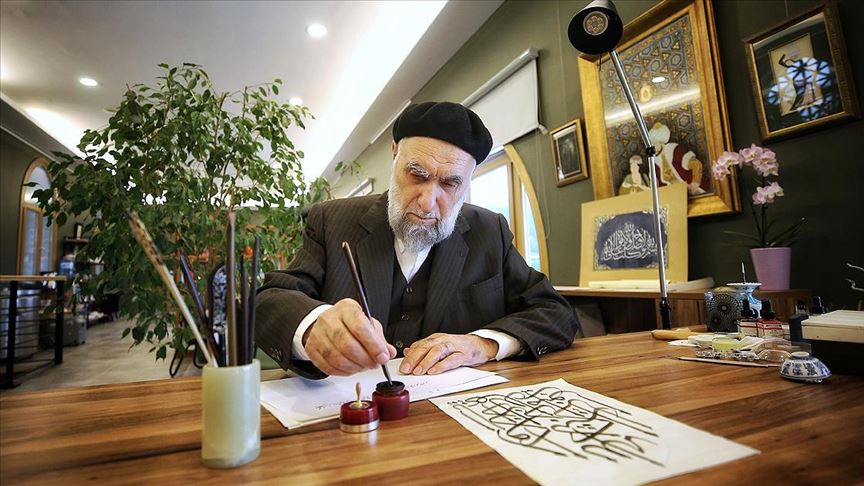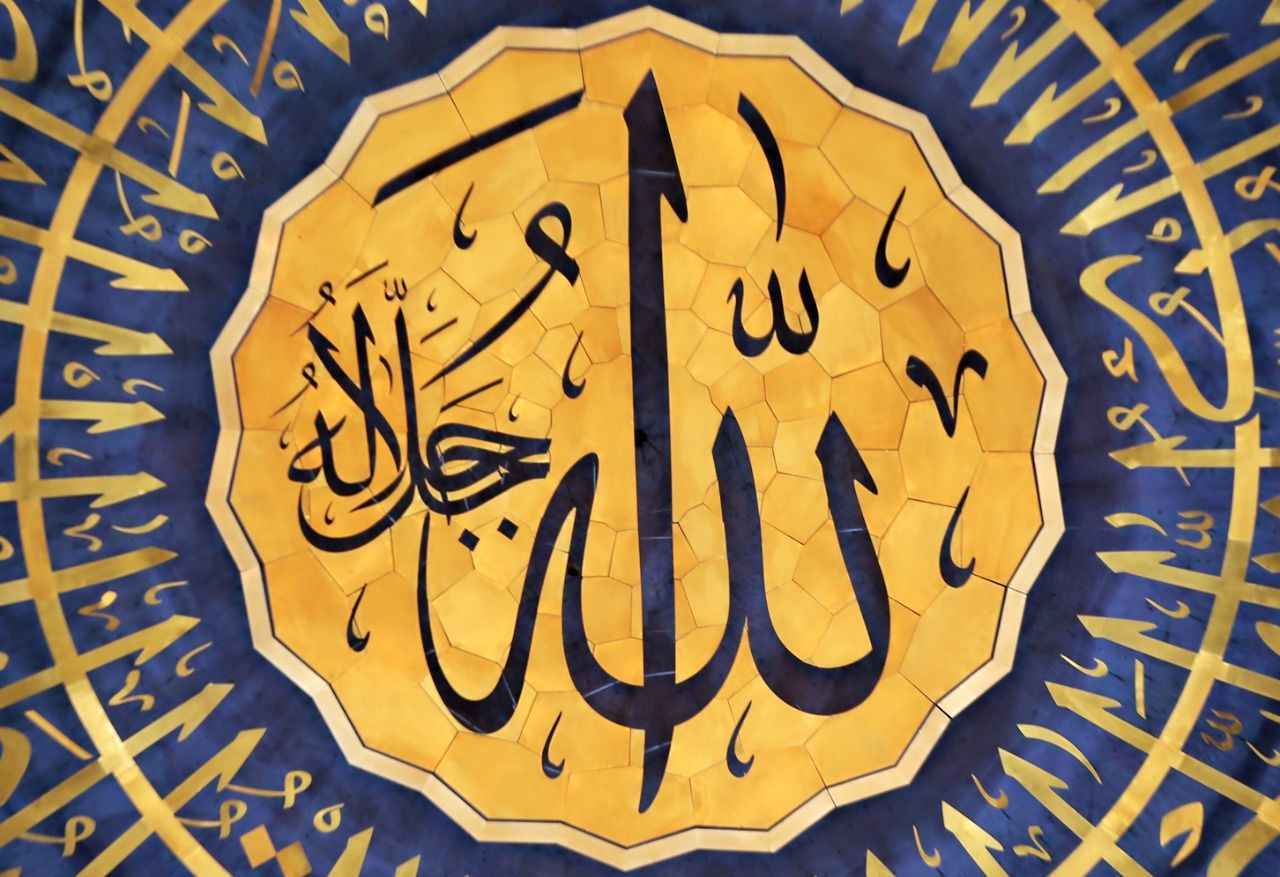Hasan Çelebi was a renowned Turkish calligrapher who made significant contributions to Islamic calligraphy from the second half of the 20th century onward. His work appears in many pieces both in Türkiye and abroad. He received traditional calligraphy training and obtained ijazah (certification) in thuluth, naskh, ta'liq, and riq’ah scripts. He served as a muezzin and imam before retiring in 1987, after which he devoted himself entirely to calligraphy. Participating in international exhibitions, he inscribed mosques and trained many students. He passed away on February 24, 2025, in Istanbul.

(Calligrapher Hasan Çelebi, October 2019 - Anadolu Agency)
Life
Hasan Çelebi was born in 1937 in İnci village, Oltu district, Erzurum, Türkiye. He was the son of Tahsin Efendi and Sakine Hanım. At a young age, he learned reading and writing while also memorizing the Qur'an. In 1954, he moved to Istanbul for religious education, studying Arabic and Islamic sciences at Üçbaş and Çinili madrasahs. In 1956, he was appointed muezzin at Mihrimah Sultan Mosque in Üsküdar.
After completing his military service in 1957-1958, he started serving as an imam at Nasuhi Mehmed Efendi Mosque in Üsküdar. Following the 1960 military coup, he left Istanbul and worked as a muezzin in Yusufeli, Artvin. Returning to Istanbul in 1963, he resumed his role as an imam at Mehmed Sa’id Efendi Mosque in Üsküdar. After serving at Sheikh Mosque for ten years, he was appointed to Selami Ali Efendi Mosque. He retired voluntarily in 1987.
Introduction to Calligraphy and Training
In 1964, Hasan Çelebi began studying Islamic calligraphy. He received training from Halim Özyazıcı, Hamid Aytaç, and Kemal Batanay. In 1975, he obtained ijazah in thuluth and naskh scripts from Hamid Aytaç, and in 1981, he received ijazah in ta'liq and riq’ah scripts from Kemal Batanay.
Artistic Works
In 1981, he traveled to Jeddah to inscribe calligraphy for the Organization of Islamic Cooperation (OIC). In 1983, he worked in Medina on the restoration of calligraphy at Al-Masjid an-Nabawi. In 1987, he spent a year in Medina for the inscriptions of Quba Mosque.
His first solo exhibition was held in 1982 at IRCICA (Research Center for Islamic History, Art, and Culture). He later exhibited in Kuala Lumpur (Malaysia) in 1984 and Amman (Jordan) in 1985, upon the invitation of Prince Hassan bin Talal. In 1992, he was invited by the Malaysian Islamic Cultural Center to give seminars and open an exhibition in Kuala Lumpur. In 1994, he held his "30th Anniversary in Calligraphy" exhibition.
Some of Hasan Çelebi's most notable works include:
- Sultanahmet Mosque (restored dome inscriptions)
- Hırka-i Şerif Mosque (dome inscriptions)
- Grand Mosque of Medina (Al-Masjid an-Nabawi), Qiblatain Mosque, and Jumu'ah Mosque (inscriptions in new sections, Medina, Saudi Arabia)
- Islamic Medical Center, Kuwait (1986) (interior and exterior inscriptions)
- Fatih Mosque, Pforzheim, Germany (1991)
- Johannesburg Jumu'ah Mosque, South Africa (1997)
- Almaty Central Jumu'ah Mosque, Kazakhstan (1999)
- Grand Çamlıca Mosque, Istanbul
- Sri Sendayan Mosque, Malaysia

(A work by Hasan Çelebi - Anadolu Agency)
Students and Contributions to Calligraphy
Hasan Çelebi played a vital role in reviving Islamic calligraphy, training numerous students. He started teaching calligraphy in 1976 and granted ijazah to 44 students both in Türkiye and internationally. He also served as a jury member in IRCICA’s international calligraphy competitions.
Awards and Honors
- 2010: Living Human Treasure (UNESCO designation)
- 2011: Presidential Grand Award for Culture and Arts (Türkiye)
- 2008: Ministry of Culture’s Service to Art Award
- Necip Fazıl Honor Award
Death
Hasan Çelebi passed away on February 24, 2025, in Istanbul. Following his passing, condolences were expressed by President Recep Tayyip Erdoğan, Speaker of the Grand National Assembly of Türkiye Numan Kurtulmuş, the Ministry of Culture and Tourism, and various art institutions.



